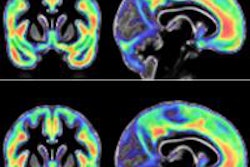Dear MRI Insider,
While all of our faithful readers are familiar with MR technology as the foundation for the amazing modality that diagnoses a multitude of maladies every day, a Massachusetts company has extended MR's principles to develop a better way to identify sepsis -- by scanning blood samples from patients.
While it doesn't produce images, the T2MR technology developed by T2 Biosystems is similar to diffusion-tensor MRI in terms of measuring how water molecules react to the presence of superparamagnetic particles to detect sepsis faster and more accurately than traditional blood cultures.
So far, the results are quite positive, as you will see in this MRI Insider Exclusive.
Also, don't miss the details of disturbing new findings about gadolinium retention. Colorado researchers found increased MR signal intensity in the brains of pediatric patients given a linear gadolinium-based contrast agent. The findings are of particular concern because pediatric brains are still developing, and these children may be exposed to additional gadolinium in future scans, depending on their illness.
In other news, Canadian researchers have found that college athletes who have a history of concussion show changes in brain size, blood flow, and structural white matter on MRI months and even years after injury. The brain scans show less gray matter and decreased blood flow in the frontal lobe anywhere from nine months to 10 years after the injury.
A machine-learning software application may make it easier to interpret multiparametric prostate MRI exams, according to researchers from the University of California, Los Angeles. They completed a proof-of-concept study that shows the software may benefit radiologists who are not skilled in genitourinary imaging.
Athletes also may benefit from a new MRI-based approach for assessing acute musculotendinous groin injuries that shows good intra- and interrater reproducibility. The technique may help improve clinicians' confidence in MRI scoring of these injuries.
Finally, MRI safety is always a top concern for all imaging facilities. To help in those daily efforts, a coalition of international MR organizations has published a blueprint to guide the creation of three safety positions within radiology departments or imaging centers.
Be sure to visit the MRI Community on a daily basis for the latest news and groundbreaking research from around the world.


.fFmgij6Hin.png?auto=compress%2Cformat&fit=crop&h=100&q=70&w=100)





.fFmgij6Hin.png?auto=compress%2Cformat&fit=crop&h=167&q=70&w=250)











